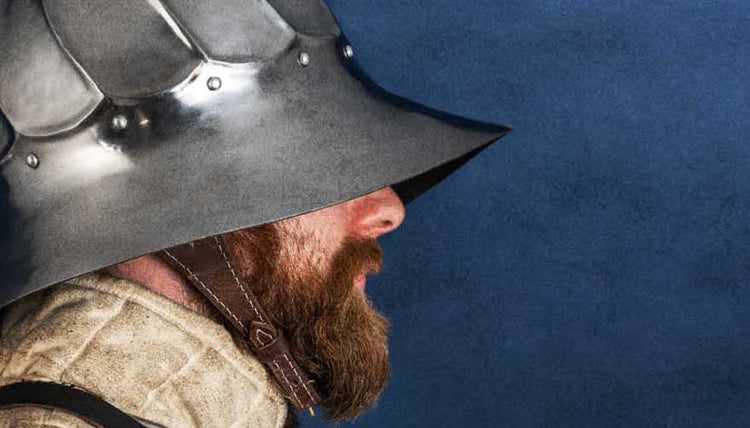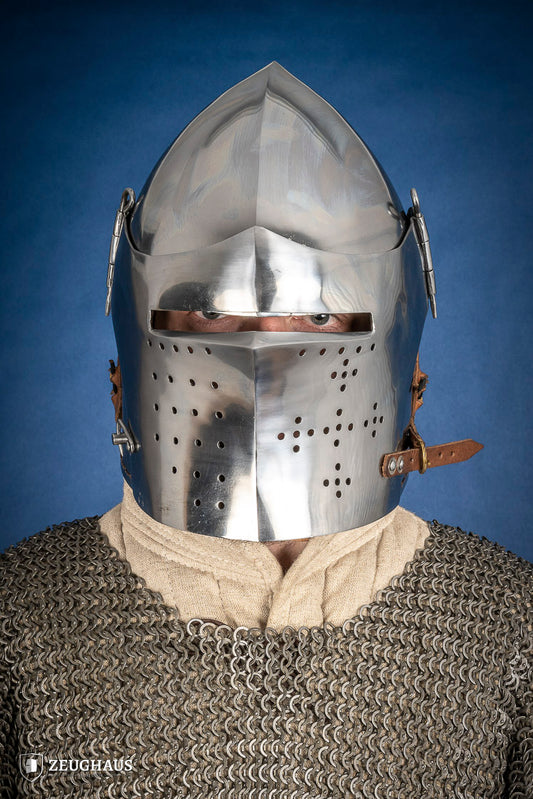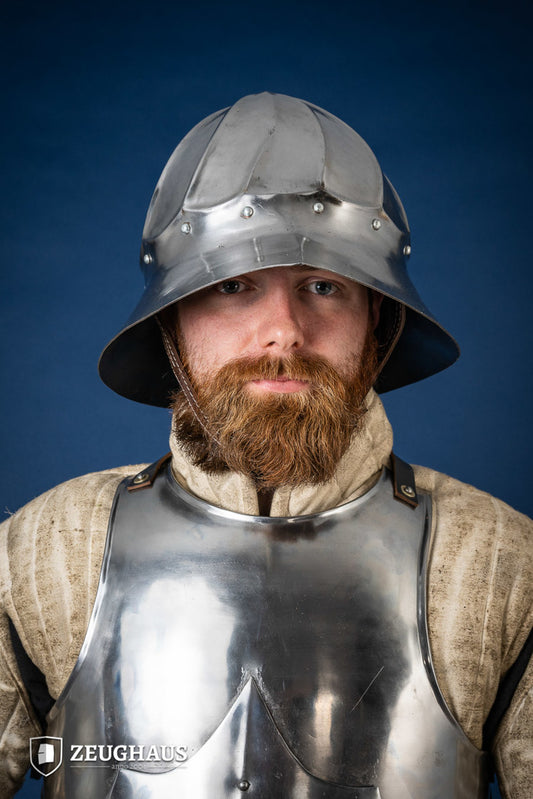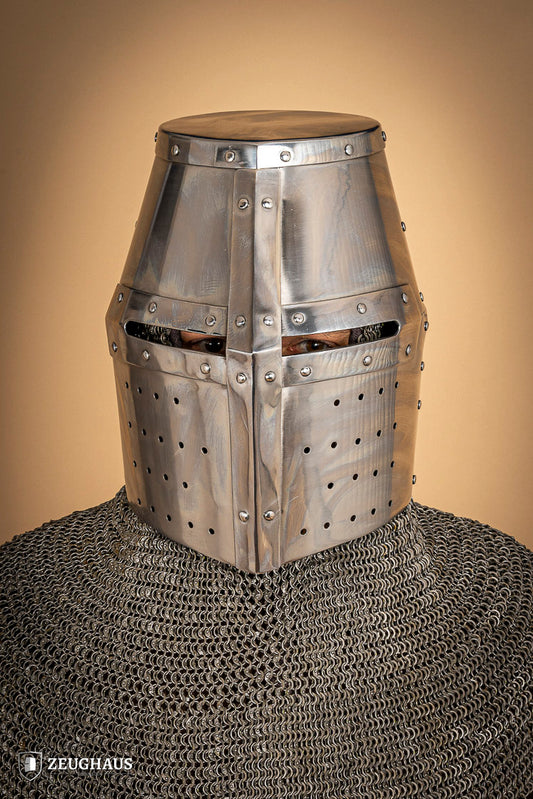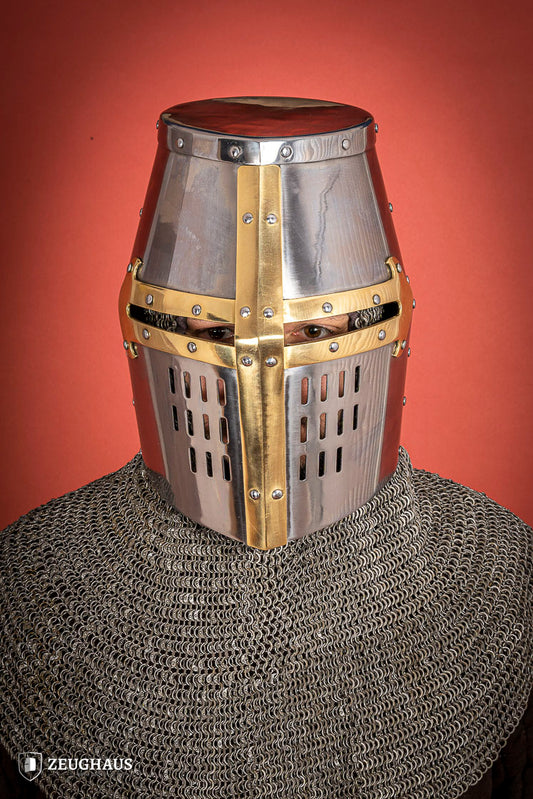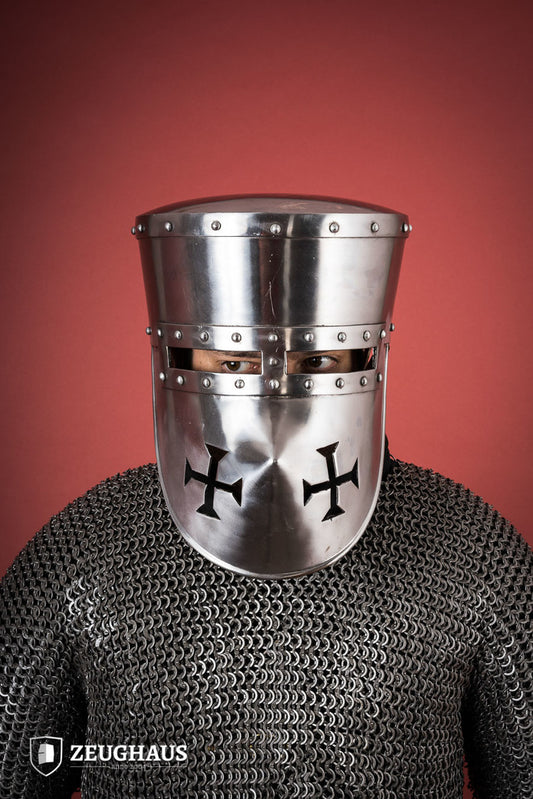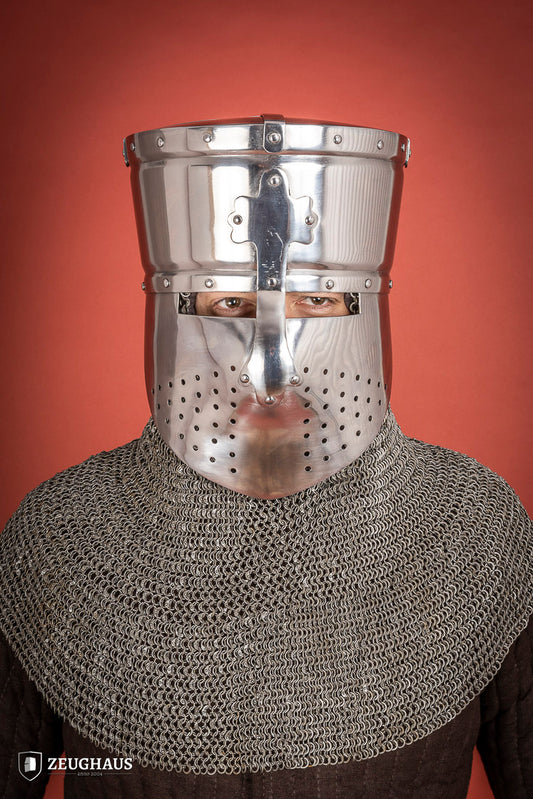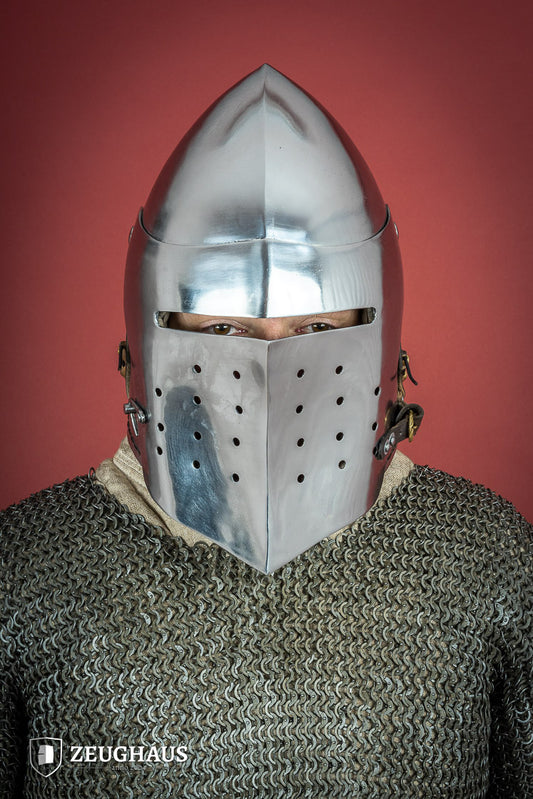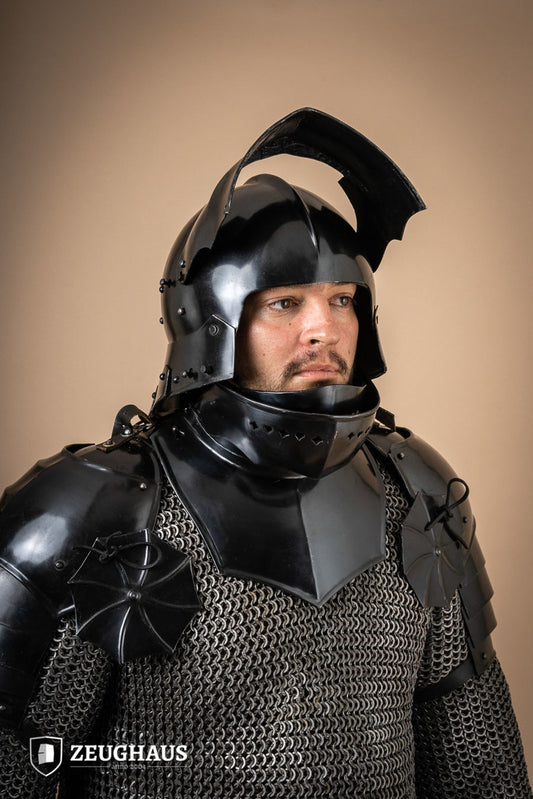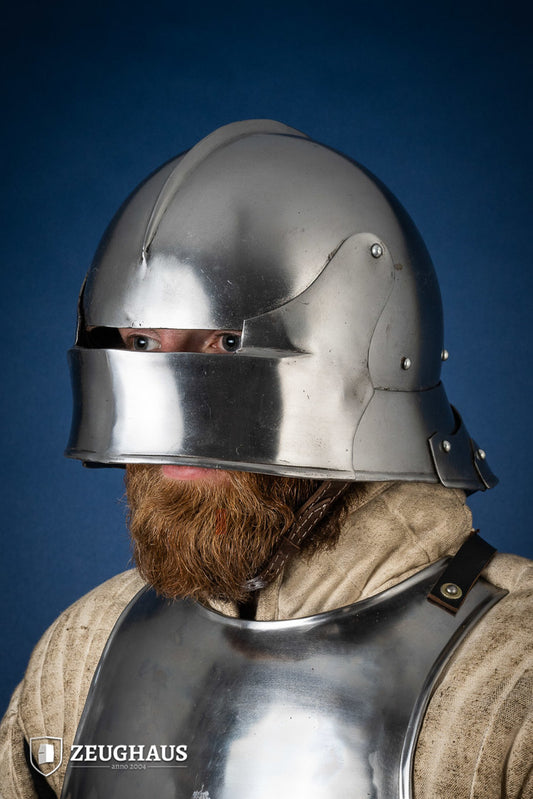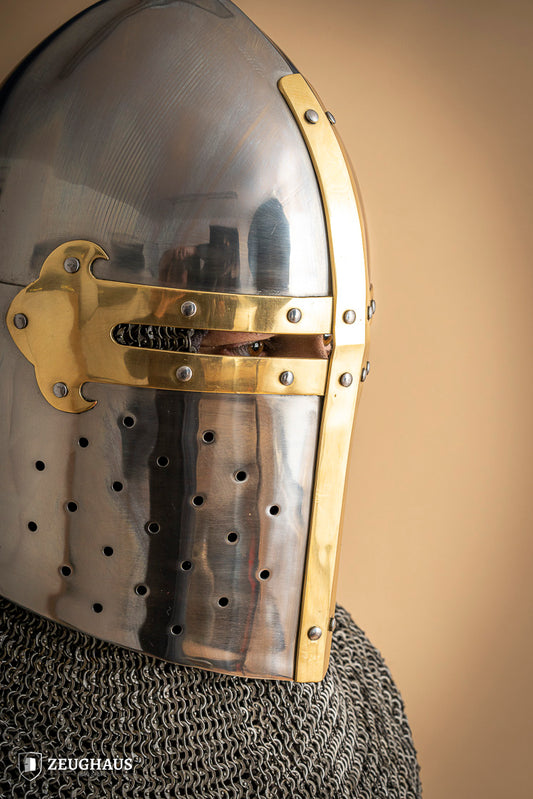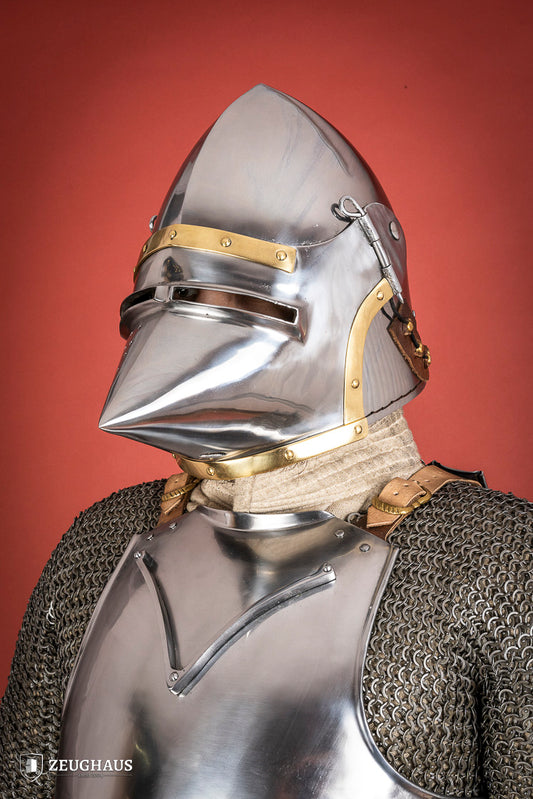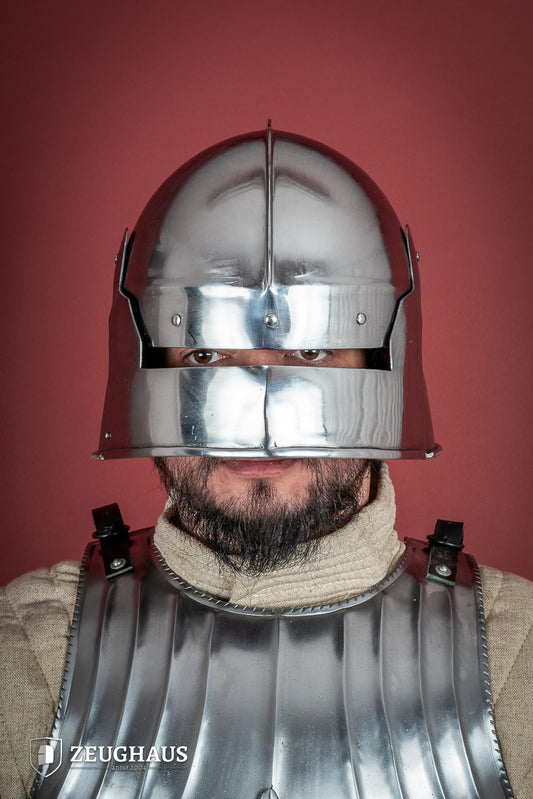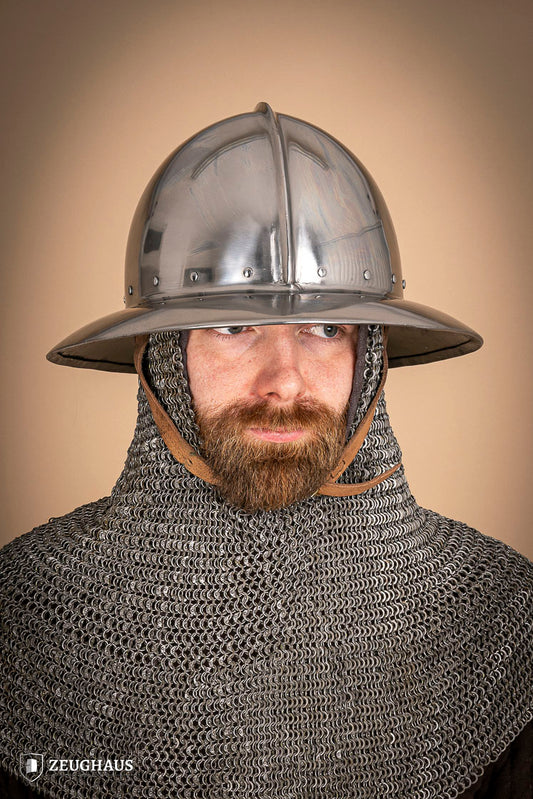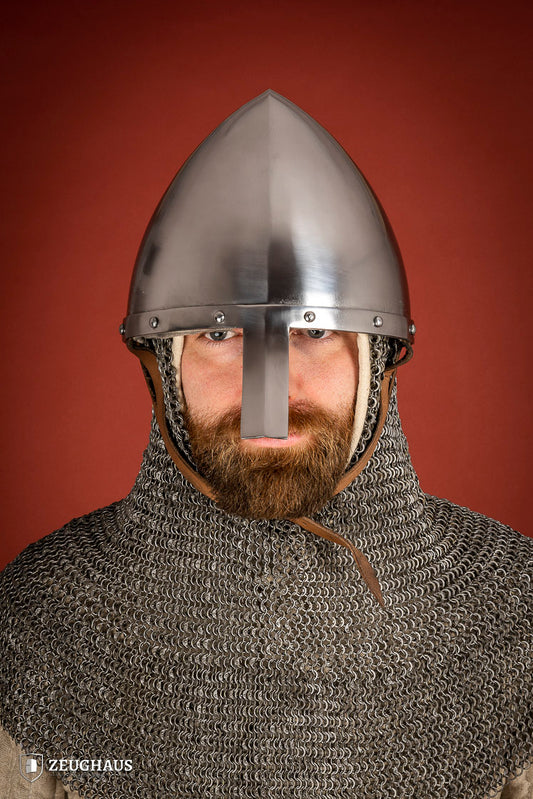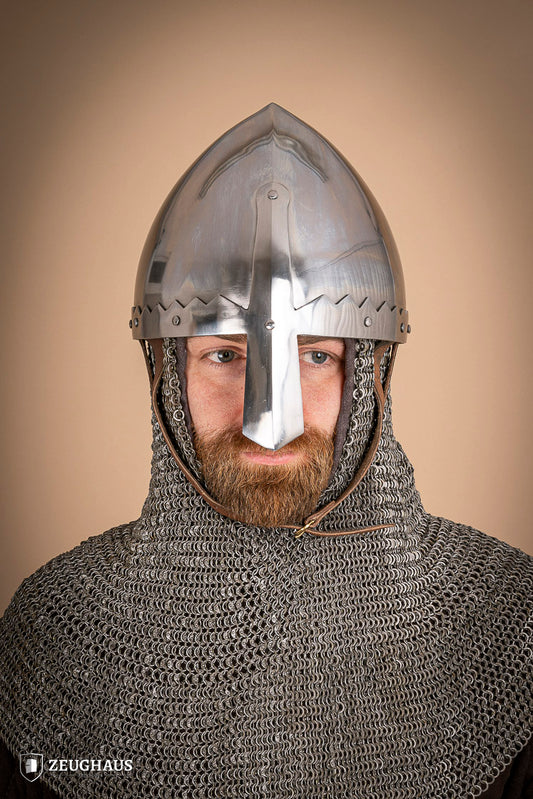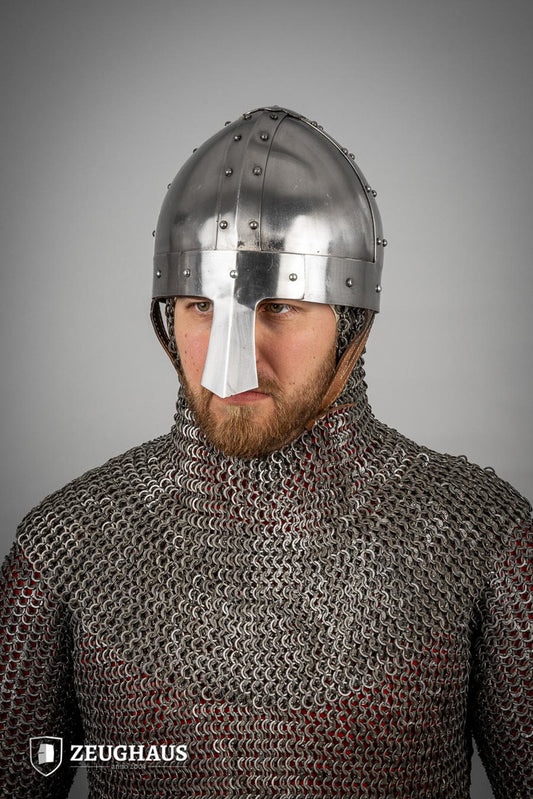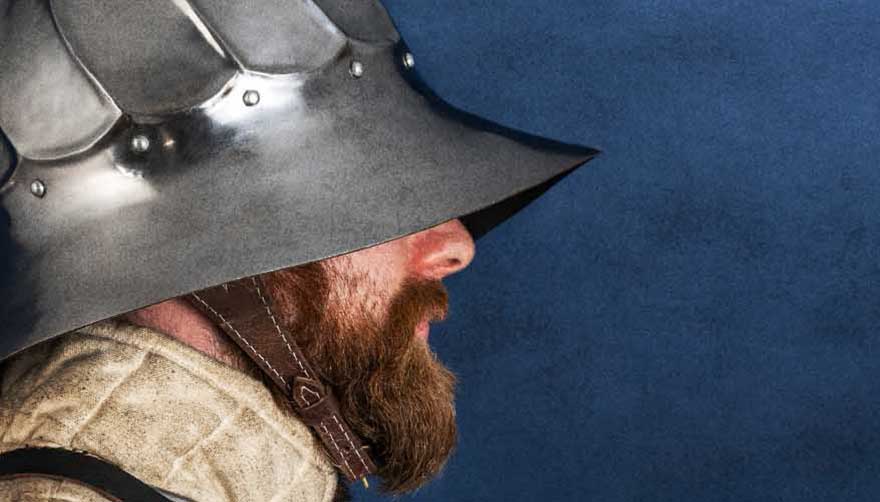Whether it be in LARP or a reenactment, a knight without a helmet is simply incomplete. This was especially true during the Middle Ages. Protective headgear also served as a status symbol made to impress and intimidate.
Helmets
Between the years 750 and 1050, the word “helm” was already used in the Old High German language. The word was also used in Old English before the word “helmet” was used in Middle English after the Norman Conquest of 1066. Its etymological roots lie in the Germanic helma as well as the Indo-Germanic root *kel, which means "to cover" or "to veil."
Its name thus describes its function to perfection: a helmet protects its wearer’s head, probably the most important, and at the same time most sensitive, part of the body in battle.
Helmets of Ancient Times
From the earliest times, fighters recognized the value of solid, protective headgear. Helmets have developed over the millennia under the steadfast hammer of the armourer. Archaeology has already uncovered the earliest precursors of ancient times.
The earliest helmets can hardly be compared to our current notion of headgear. Just as the earliest armour was made of hide, textiles, and leather, with metal only gradually being introduced in the form of chain mail and plate armour, early helmets were also made of natural materials which provided limited protection.
The first metal helmets are made of bronze and date back to the 3rd millennium BC. The Sumerians and the Egyptians were the first to equip fighters with helmets. However, it wasn’t until the use of iron that the helmet became an indispensable piece of equipment for knights and eventually a mass product for even the simple foot soldier in the army.
Historians attribute the first iron helmets to the Hittites in the 14th century BC and the Dorians in the 12th century BC. From the latter, the use of iron was also introduced to Greece. Although the Greek conquerors continued to use bronze for centuries, it is the various Greek helmets that serve as an important basis for the development of the helmet into the late Middle Ages and beyond.
The famous Corinthian helmet, the Chalcidian helmet, the Attic and Thracian helmets, and the Boeotian helmet are the bronze archaeological legacy of Greek military history.
The Greek traditions were also taken up by the well-traveled, defensive Romans and adapted to their own military requirements and experiences. As great conquerors, they achieved, impressively for their time, dominion over a good three percent of the world's surface. In the process, they set standards in the art of war and in weapons and armour technology.
The Romans equipped whole armies with helmets under the generic terms Cassis and Galea. Over time, the Romans developed different types of helmets as variations of the Greek Chaldic and Attic helmets. The most well-known is the simple Motefortino helmet type. Characteristic of the new Roman variant were the cheek flaps that could often be raised. Both the Montefortino and then the Coolus-type helmet were still made of bronze.
From the first century, the Romans began to mass-produce iron helmets. From films about the eventful history of the Roman Empire, many of us can recall the Imperial Gaulish helmet, also known as Weisenau after the first archaeological site. It was followed by the Late Roman crest helmet at the end of the Western Roman Empire.
During the Middle Ages, a time characterized by warlike conflicts, helmet types that are still recognized today were brought forth.
Helmets of the Middle Ages
During the early Middle Ages, armour from central and northern Europe was influenced by Asia, but also exhibited developments from mainland Europe, and later Britain and Scandinavia. Clasp helmets, lamellar helmets, banded helmets, or Nordic comb helmets adorned and protected the heads of various armed forces.
Knights and soldiers of the High Middle Ages benefited from the increasing perfection of metalworking and blacksmithing. The nasal helmet from the 10th century is a common example of this. Prioritizing effectiveness over aesthetics, the 12th-century cylindrical pot helmets with fixed visors adapted to the advancing technical possibilities of the time. In parallel, simpler types of helmets emerged, such as the iron hat and the pelvic hood.
The image we often have today of the classic knight in iron armour dates from the late Middle Ages. The dog bowl, the armet, and the closed helmet complete the equipment of the knight and equivalent warriors.
Foot soldiers, on the other hand, protected themselves with simpler variants, such as the pear helmet or the morion. From around the 16th century, lighter helmets, such as the open balaclava, took the changed conditions brought about by modern military tactics and the increased use of firearms into account. The Hungarian Zischägge is one such example.
To a large extent weapons technology finally displaced the classic helmet from the battlefield by around the second half of the 17th century.

